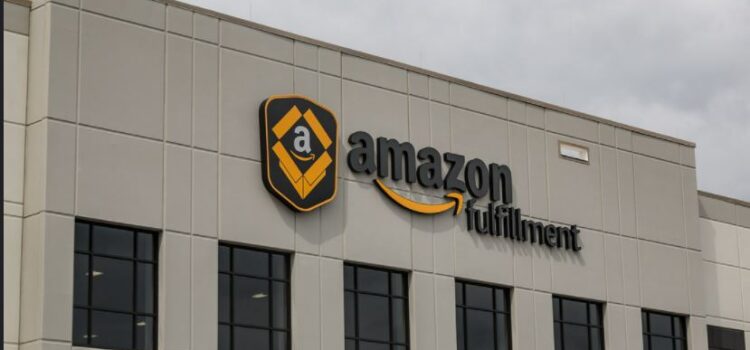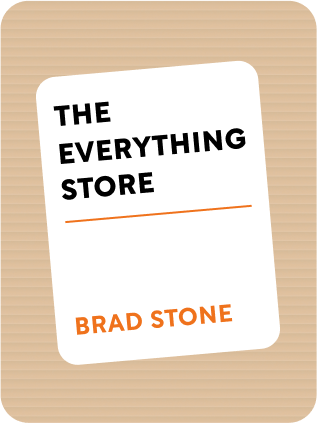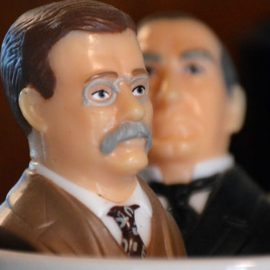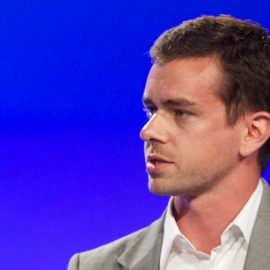

This article is an excerpt from the Shortform book guide to "The Everything Store" by Brad Stone. Shortform has the world's best summaries and analyses of books you should be reading.
Like this article? Sign up for a free trial here .
In what ways did Amazon grow in the mid-2000s? What big changes came about during these years?
The mid-2000s brought about many changes for Amazon. During this time, Amazon entered a war with Zappos, launched Mechanical Turk, relaunched its web services and “fulfillment by Amazon.” It was well on its way to becoming the giant it is today.
Below is Amazon’s timeline of events from 2005-2007.
Amazon, the Growing Giant
In the mid-2000s, Amazon’s retail flywheel gained formidable momentum, and its experimental projects started yielding fruit. Here is Amazon’s timeline of events:
Amazon and Zappos
August 2005: Bezos meets with Zappos execs (Tony Hsieh, Alfred Lin, Michael Moritz, Nick Swinmurn) and announces the intention of acquiring Zappos.
- Zappos has become synonymous with buying footwear online. It boasts sales growing from $8.6 million in 2001 to $70 million in 2003 and $370 million in 2005.
- Amazon has not done this well in footwear. Zappos has built strong relationships with brands like Nike, which fear Amazon for being a discounter and brand destroyer. Amazon’s website also is not suited for listing variations among a single good – it lists different colors, sizes, and widths all as separate items with separate web pages.
- The cultures between the two companies are somewhat similar.
- Zappos is obsessive about customer experience, promising free 5-7 day delivery and trying to meet 2-day delivery. Customers can return items up to a year after the purchase. Customer center calls can take as long as needed, and customers sometimes enjoy hours-long calls.
- Hsieh believes that everyone should take below-market compensation to work at Zappos because of the great internal culture.
- Amazon execs believe Zappos could be acquired for $500 million, but Bezos imagines paying just a fraction of this.
- Zappos desires to remain independent. Bezos goes to war, building Endless.com as a separate site dedicated to shoes and handbags.
- This is the same time Amazon is spending heavily on the Kindle and AWS, so the board is wary of Amazon spreading itself thin and overspending.
- Amazon CFO: “How much money do you want to spend on this?” Bezos: “How much do you have?”
Amazon’s Mechanical Turk
November 2005: Amazon launches Mechanical Turk, a service allowing hiring of humans to perform low-cost, hard to automate services like image recognition and data categorization.
- The name comes from an 18th century chess-playing automaton that appeared to play chess independently but actually concealed a man inside.
- The service comes from an investment Bezos made in the late 1990s in Cambrian Ventures, an incubator founded by founders of Junglee (which had been acquired by Amazon). The founders patent a method of coordinating groups of people worldwide to offer human intelligence tasks, inspired by Napster and the power of networks. When the company fails, Bezos acquires the patent and develops Mechanical Turk in Amazon.
- As is now typical in Amazon services, before release to public customers, Turk’s first customer is Amazon. Turk is first used internally in Amazon to have humans review book scans and check uploaded product images.
- (Today, Turk is not a huge part of the company, but it’s emblematic of the orthogonal technological innovation Amazon attempts in this period.)
Amazon Web Services
March 2006: Amazon relaunches Amazon Web Services, this time offering S3, SQS, and EC2.
- Andy Jassy, Harvard MBA and anomalously not an engineer, leads the effort. He previously shadowed Bezos, sitting in on every meeting and acting effectively as chief of staff.
- The vision statement: “to enable developers and companies to use Web services to build sophisticated and scalable applications.” Jassy: “We tried to imagine a student in a dorm room who would have at his or her disposal the same infrastructure as the largest companies in the world.”
- The board is skeptical. Doerr: “why would we go into this business” when Amazon is already struggling to hire engineers and needs to expand internationally? Bezos: “Because we need it as well” – thus there will be other companies who have this same need.
- AWS’s business model is novel, allowing customers to pay on-demand for server usage, like a utility. At the time, other server services only allowed for fixed subscriptions regardless of the amount used (eg monthly).
- Bezos wants to charge 10 cents per hour for EC2, even though 15 cents per hour would allow Amazon to break even. Bezos suspects lower prices will repel rivals like Microsoft and Google because it would depress their margins.
- Author Brad Stone argues that AWS “helped lift the entire technology industry out of a prolonged post-dot-com malaise” and that it enlarged the scope of Amazon’s everything store concept. It makes Amazon a confusing target for Walmart and other retailers, since Amazon is no longer just clearly an online retailer to compete with. It clearly puts Amazon in the realm of a technology company.
Fulfillment by Amazon
2006: Amazon launches Fulfillment by Amazon, letting sellers use Amazon’s fulfillment network to store, pack, and ship their products. In other words, Amazon is storing inventory owned by other companies and handling logistics for them.
- “We had built such a good service that people were willing to pay us to use it.” – Wilke team member.
December 2006: Endless.com launches as the Zappos competitor. They compete with Endless on pricing and customer service.
- Endless offers free overnight shipping and free returns, clearly losing money but designed to make Zappos bleed. Zappos matches Amazon’s free overnight shipping.
- Recall that shoe manufacturers were wary of working with Amazon, fearing that they would ruthlessly discount their shoes. Amazon is in an awkward position, trying to undercut Zappos with price while promising brand name companies they won’t cut prices too much.
- Amazon adds a $5 bonus to free overnight shipping.
- Zappos places advertisements on the plastic shoe bins in airport security. Bezos is alarmed: “They are outthinking us!”
- Despite Amazon’s volleys, Zappos grows further up to $1 billion in sales over the next few years, but the financial crisis hits them, making fundraising harder and lowering consumer spending.
Amazon Surpasses eBay
April 2007: Amazon announces surprisingly strong Q1 results, with quarterly sales reaching $3 billion, growing 32% YoY compared to ecommerce at 12%. Its stock gains 37% in a week.
- This suggests Amazon is stealing customers from other e-commerce companies and from physical retailers.
- The flywheel effect of Prime and Amazon’s growing power is becoming clearer.
- eBay meanwhile is fading – customers prefer convenience and certainty, not wanting to wait 7 days to figure out if his bid for goods of questionable quality has won. eBay releases its fixed-price product too late. Amazon surpasses eBay’s valuation for the first time in almost a decade, and that year reports more sales than Barnes & Noble and eBay combined.
- Regardless, Bezos drives forward: “to be a $200 billion company, we’ve got to learn how to sell clothes and food” – like Walmart.

———End of Preview———
Like what you just read? Read the rest of the world's best book summary and analysis of Brad Stone's "The Everything Store" at Shortform .
Here's what you'll find in our full The Everything Store summary :
- How Amazon went from an online bookstore to the largest internet retailer in the world
- What Jeff Bezos did to compete with companies like eBay, Zappos, and Diapers.com
- What it was like to work for Jeff Bezos






